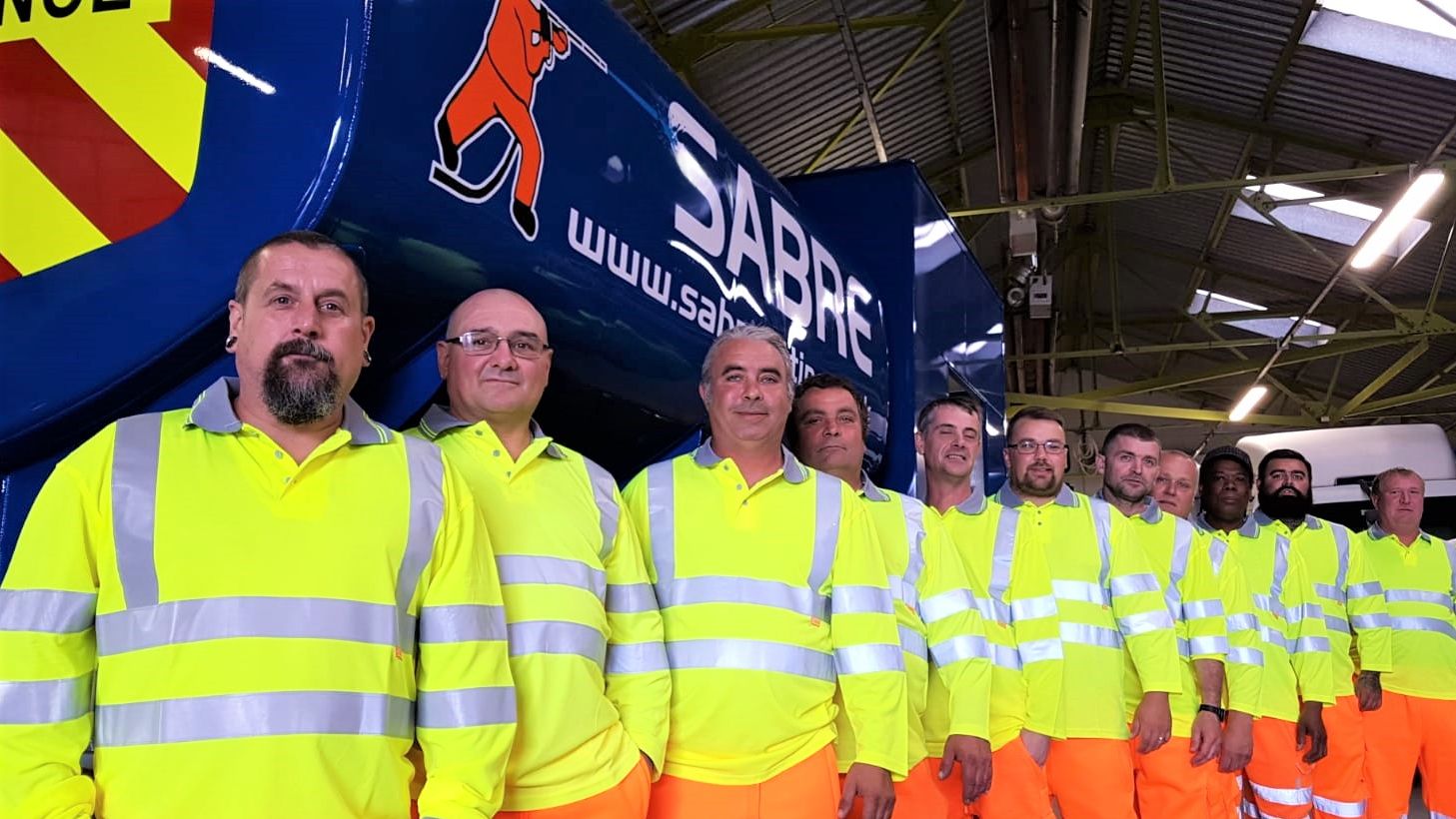What is hydrodemolition?
Dec 16 2014Hydrodemolition is the controlled removal of concrete using high pressure water. Despite the name hydrodemolition, the technique is used mainly for localised concrete removal on civil engineering contracts rather than for traditional building demolition. High speed water penetrates cracks in the concrete and the hydraulic effect causes the concrete to burst into smaller pieces. A brilliant example of this can be seen on our homepage; a slow motion video of an operator using a hand held lance to remove concrete to a deck. The video shows the operator maintaining the position of the water jet on the concrete allowing the water to break away the concrete at its weakest point.
Hydrodemolition can be used for a wide variety of applications, from intricate removal around bearings, to mass demolition of decks, piers or parapets. Operators will select different pressures to suit each task. For instance, when removing bearings, a lower pressure would be selected to allow the operator to manoeuvre the jetting lance around the bearing plate and bolts and to breakout to the back of the bearing shelf. Alternatively, when removing concrete to a deck or a parapet, a higher pressure can be utilised as the operator allows the brute force of the constant water jet to hammer away at the concrete. At Sabre Jetting, we have vast experience of all types of hydrodemolition and always apply the optimum techniques to ensure work is carried out as safely and efficiently as possible on every contract.
The main reasons for selecting hydrodemolition as a method of removal are to keep steel reinforcement intact, or to avoid any vibration to the rest of the structure from which the concrete is being removed. When removing concrete with high pressure water, no damage whatsoever is caused to the steel reinforcement by the water jet, making this technique ideal for repair contracts. The water will only cause destruction at the point at which it hits the surface of the concrete meaning the rest of the structure suffers no adverse consequences from the removal. A further benefit is that when hydrodemolition is used, a rough finish is created on the remaining concrete, giving the ideal bonding surface for the new concrete.
As well as not causing vibration to the adjacent structure, the operator of a hand held lance will also not suffer any vibration when carrying out hydrodemolition. An independent report by the British H&S Laboratories found that operators will not exceed the exposure action values when carrying out high pressure water jetting with a straight jet. This means that hydrodemolition is therefore preferable to using hand held mechanical tools. This has led to a large increase in the use of hydrodemolition as an alternative to jackhammers.
Hydrodemolition Projects
Repairs
Hydrodemolition is often used on repair contracts to remove damaged or failing concrete in varying sized patches whilst leaving the sound concrete intact. A survey will be carried out to determine the areas of concrete to be removed. Hydrodemolition will then be employed to remove the patches, exposing the reinforcement and allowing repair concrete to be sprayed or poured back. The top layer of the concrete is removed first, followed by breaking out behind the bars to ensure the replaced concrete effectively repairs each location. Repair works are often carried out on piers, abutments and soffits of bridges as well as on jetties and concrete tanks. Details of major repair projects we have carried out at Newport Jetty and on the Midland Links can be found on our projects page.
Bearings
Another common application for hydrodemolition is to allow the removal of bearings used to support bridge decks. This can be straightforward where there is good access and plenty of room to work. However, this is often not the case and the breakout can be highly technical and physically demanding. Where there is little room to work due to the design of the structure, a lance shorter than the standard minimum may be required. If this is the case, the situation must be assessed to ensure there is no other option but to use a shortened lance. Sabre Jetting has stringent procedures in place for such scenarios and all operators are trained on these procedures.
Piles
Sabre Jetting has carried out numerous pile projects over the last 30 years. Hydrodemolition is used to reduce the height of the piles to the level that the contractor requires. The contractor will sometimes demolish the top of the piles, as far as possible, using conventional means and then hydrodemolition is used to complete the breakout and save the required amount of steel.
Large Scale Removal to Parapets, Decks & Piers
Parapet removal projects are often higher volume than many other projects. The requirement may be to upgrade the existing parapet or to remove the parapet to allow a widening of the bridge. Using the best equipment available, we are able to achieve outputs of up to 2m3 per crew on this type of removal. Similar rates of removal are possible on deck removal projects as the removal technique is almost identical. Where pier projects are concerned, hydrodemolition is commonly used for repairs as mentioned previously. However, as demonstrated on our projects page, major controlled demolition of piers can be carried out using water jetting, as with the M27 Junction 9 and the A1260 Bridge structure projects.
The projects described are common applications for hydrodemolition but by no means an exhaustive list. If you have any questions about hydrodemolition or in relation to an upcoming hydrodemolition project, please feel free to contact us and we will be more than happy to offer our expertise.


